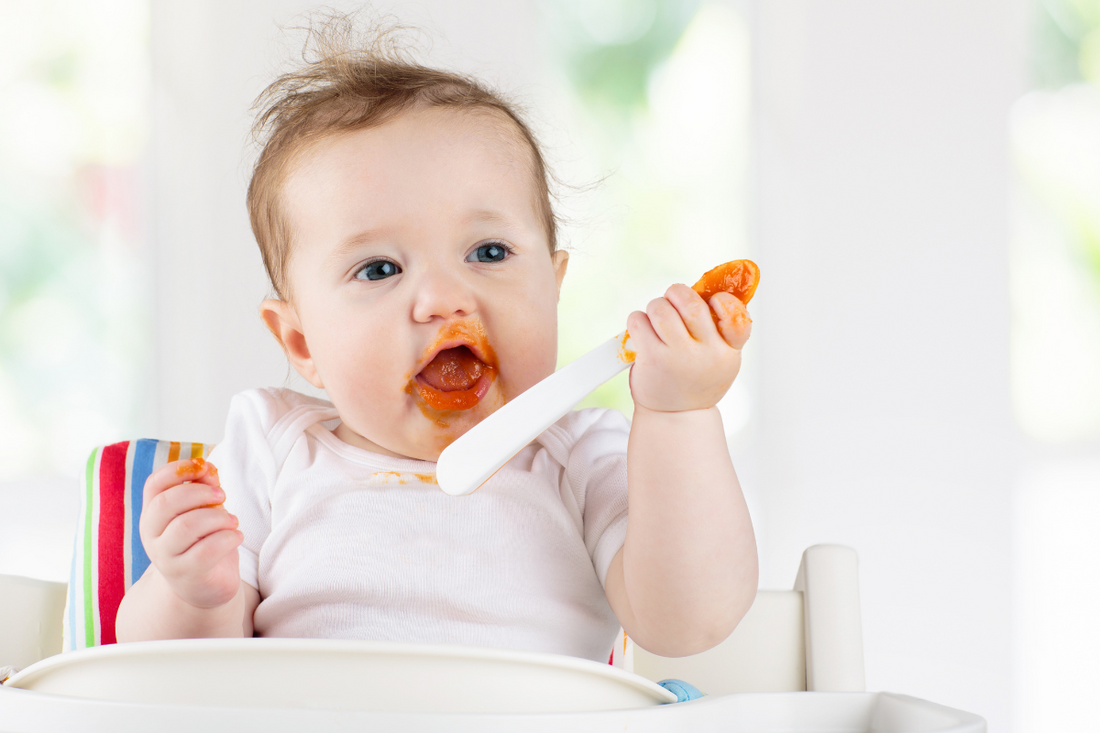
Safe Eating Environment for Babies: Crucial Steps When Starting Solids
Introducing solids is an exciting milestone for both you and your baby! This new phase opens up a world of flavors and textures, but it also comes with its own set of safety considerations and best practices. Let’s dive into how you can ensure a smooth and enjoyable journey while transitioning from milk to solids.
Introduction: Setting the Stage for Solids
As your little one begins to explore solid foods, it’s crucial to lay the groundwork for a safe and positive eating experience. From choosing the right high chair to understanding how to introduce new foods, this journey is all about creating healthy eating habits and minimizing risks. Here’s your guide to mastering the basics of starting first foods for babies with confidence.
Safety and Meal Basics: Introducing Solids with Confidence
- High Chair is essential: The high chair isn’t just a convenient spot for feeding; it’s a safety essential. Always ensure your baby is seated in a high chair during mealtime. This keeps them securely in place and reduces the risk of accidents.
- Upright and Alert: Maintain an upright position for your baby during solids. Avoid letting them lean back, as this can lead to choking hazards and makes swallowing more difficult.
- Never Leave Baby Unattended: Even if your baby has tasted the same food before, always supervise them during mealtime. Babies can react differently each day, so staying close ensures you can quickly address any issues that arise.
- Choking Hazard Awareness: Be vigilant about avoiding potential choking hazards. Cut foods into small (mostly steamed or cooked when possible), manageable pieces and stay informed about which foods pose a risk.
- Distraction-Free Dining: Create a calm, distraction-free environment for your baby’s meals. This helps them focus on eating and developing healthy eating practices without getting overwhelmed.
- One New Food at a Time: Start with one new food every 3 days. This method helps you identify any potential allergies and allows your baby to gradually develop their taste preferences.
- Family Meal Time: Whenever possible, have your meals together at the dining table. Babies love to mimic, and seeing you eat will encourage them to try new foods and develop good eating habits.
- Allergy Awareness: If there’s a history of allergies in your family, consult your pediatrician before introducing allergenic foods to babies such as peanuts, sesame, soy, shellfish, eggs, or dairy. This precaution helps you manage any risks and ensures your baby’s safety. Additionally, it's vital to stay alert for signs of allergic reactions or intolerances—such as rashes, hives, wheezing, difficulty breathing, vomiting, excessive gas, diarrhoea or blood in stools. Promptly address any concerning symptoms with your pediatrician.
Conclusion: A Balanced Nutritional Approach to Solids
Remember, breastmilk or formula remains your baby’s primary source of nutrition until they turn 12 months old. Solids should complement their diet and help them learn about different textures and flavors from around 4-6 months. Lastly, start your journey of introducing solids only after you look for signs of solid food readiness and follow your pediatrician’s advice.
Starting solids is a thrilling new chapter in your baby’s development. By following these safety and meal basics, you can ensure a smooth transition and build a foundation for healthy eating habits. Share your experiences, tips, or questions in the comments below—let’s support each other on this delicious journey!
